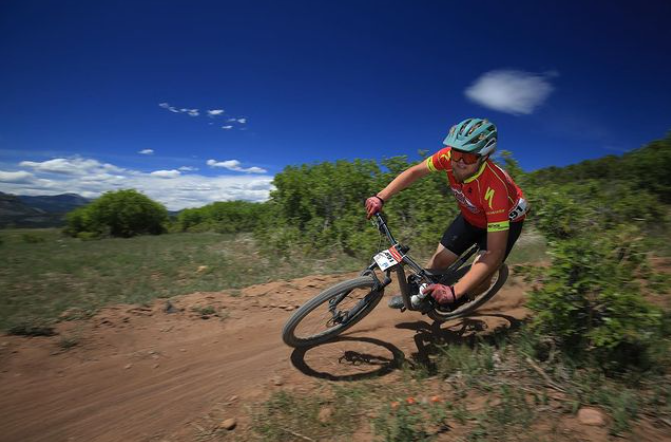How to ride singletrack – essential skills for new mountain bikers
From rocks and roots to jumps and berms, here are our tips to riding your local singletrack trails better
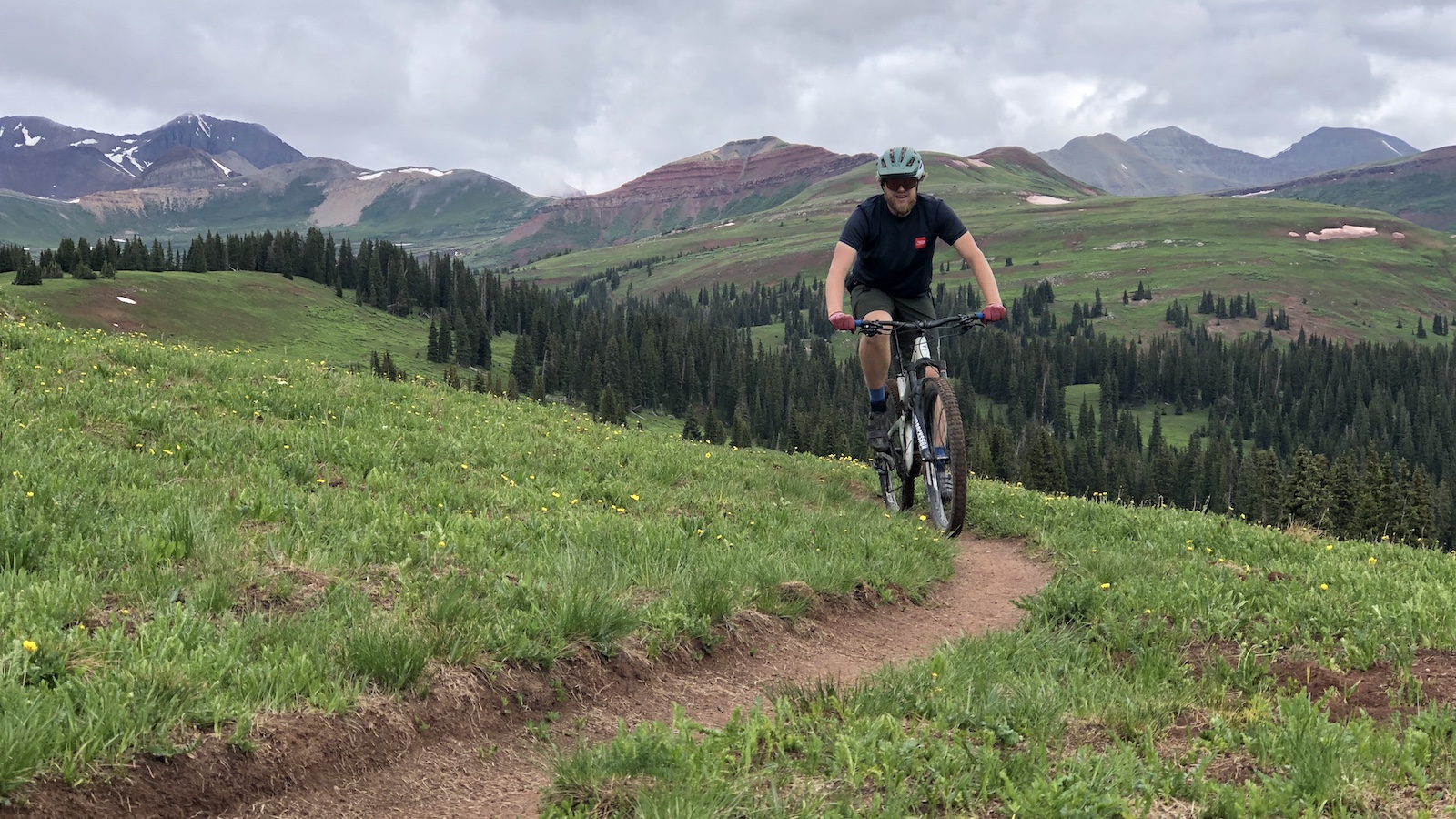
If you are a mountain biker, chances are that you've already ridden singletrack as it's one of the most common types of mountain bike trail. Mountain bike trail systems are often designed around singletrack but it's also common when riding natural trails as well, so knowing how to ride singletrack is one of the most important skills to master as you progress.
What is singletrack? Well, singletrack trails are usually around 12 inches (30cm) in width, but they might be wider or narrower. Mountain bikes are designed to ride singletrack trails fast and efficiently and even push the boundaries of what can be done on a given trail.
What can be found on singletrack mountain bike trails varies widely. Some are smooth while others are rocky and rough. Some are designed to be ridden uphill and others are sculpted to maximize the downhill fun. You'll probably encounter rocks, roots, logs, and even jumps and drops.
It's all a lot to take in, but every ride presents a chance to practice new mountain bike skills. Here are our tips on how to ride singletrack, so you can ride your local trails better, faster, and with less effort.
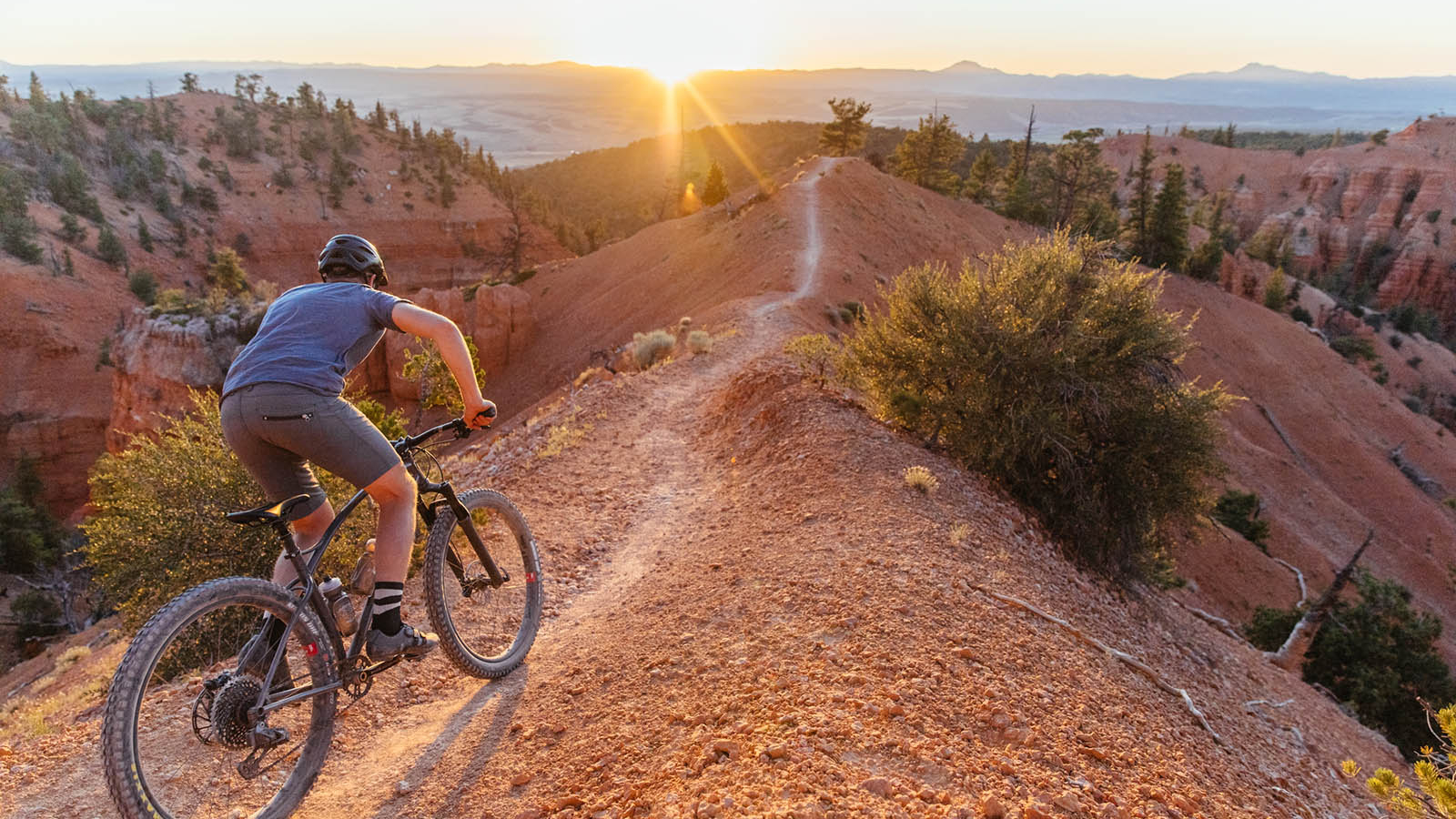
Look along the trail
One of the most fundamental skills to practice when riding singletrack is to look ahead. Trails that are narrow and technical require intense focus, and looking ahead will help you navigate all of the different features. But even on easier trails, you'll feel pretty awkward if you don't look to where you are going.
Your eyes will naturally pull your body in the direction that they're looking. So if you are staring at a tree on the side of the trail, you will be more likely to crash into that tree. But if you look ahead at the trail, you'll stay on the trail.
Riding singletrack fast and fluidly is all about linking together the various sections of the trail. A key component to that is corners. Looking ahead is also beneficial when cornering. Looking down the trail past the exit of the corner will help you ride through the turn easier.
Pumping the trail
The obvious way to increase your speed when riding any trail is to hit the pedals, but there's another and more fluid way in which you can give yourself more momentum. By compressing your body on the downslopes of undulating sections and then extending your body upwards on the upslopes, you can give yourself more speed.
This motion is called pumping and while it can take some practice to get right, done well it can be just as effective as getting in some quick pedal strokes, but has the advantage of being feeling smoother more efficient. Timing is everything with each pump and a great place to learn the technique is at your nearest pump track.
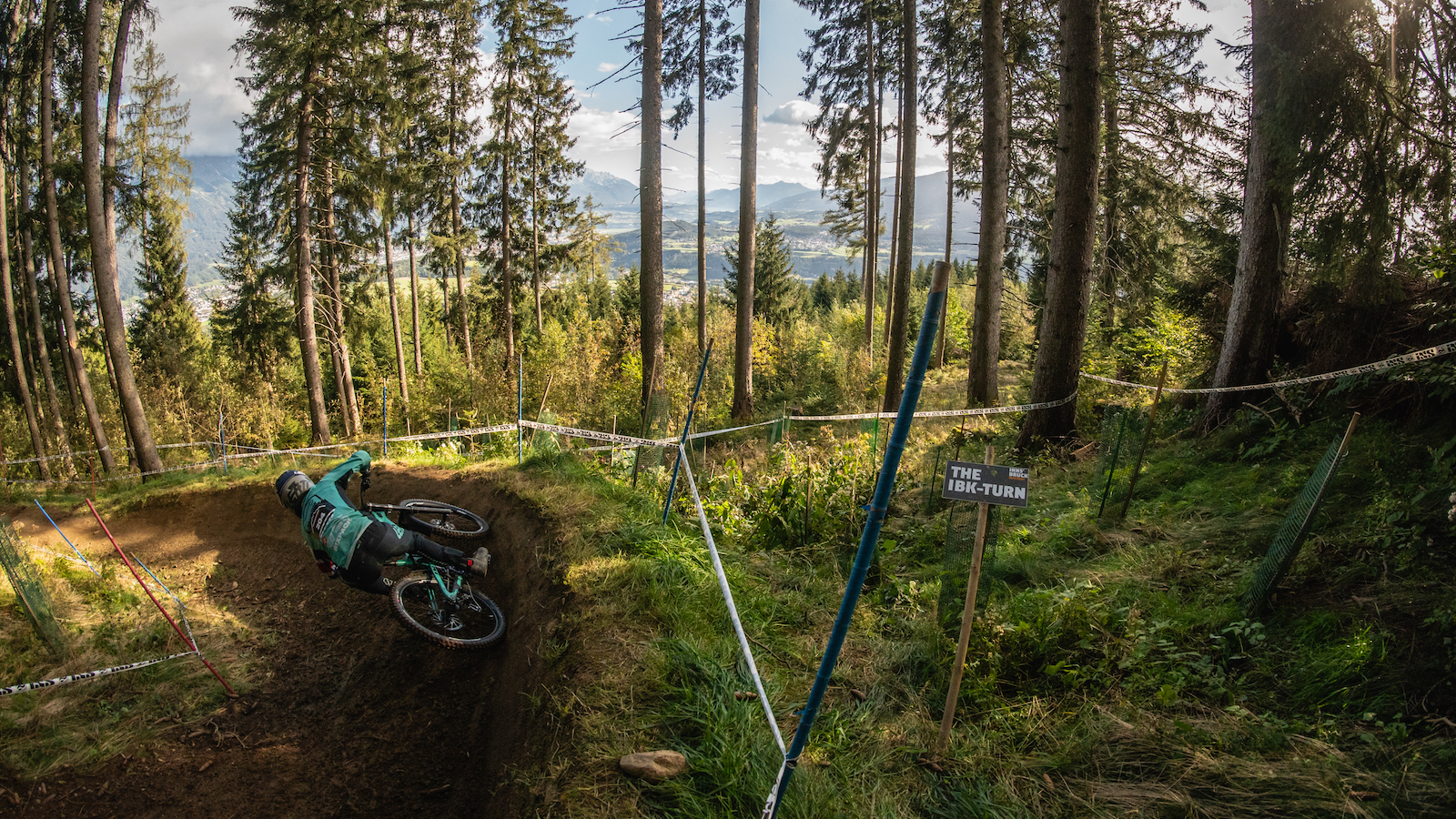
Tackling corners and berms
Learning to corner effectively is probably the most important basic skill to master as a mountain biker. The kind of corner you'll most commonly encounter are flat corners. These can be some of the most difficult to get around because traction is often sparse.
The best mountain bike tires are designed to dig into the ground, which provides the grip and traction that prevents you from falling. On flat corners, the rider has to be more intentional about digging their tires into the ground and finding that grip. This can be accomplished by leaning the bike over and lowering your outside foot so that the outside crank is in the six o'clock position. It's also important to stay balanced on the bike and keep weight over the front tire, as that's usually the first to slide out.
Trails with berms are a bit easier. Berms are banked turns that are built by trail builders to make corners easier and create a better experience on the trail. A lot of the same flat cornering technique applies when learning how to ride berms, but you don't have to worry about grip as much because the berm provides much-needed stability.
When the turns get really tight, they turn into switchbacks, which can sometimes exceed more than 180-degrees. These are challenging to ride down as choosing how to ride switchbacks greatly depends on the corner, they are also used to make climbing up steep slopes possible and easier.
On some corners, you don't have to worry about traction as much. Slight bends in the trail can be ridden without even touching the brakes - simply enjoy the speed and flow.
Riding roots and rocks
You'll encounter rocks and roots on the vast majority of mountain bike trails, particularly rocky sections of trail are called rock gardens.
Another feature that makes trails more technically challenging is off-camber sections. This is when the tread of the trail is sloping away from the direction of travel. This is another scenario where traction is critical.
The first step when figuring out how to ride rock gardens and roots is to pick a line. Sometimes there is a clear path through the mess, but other times there are multiple possible paths. Generally, you want to pick the smoothest and quickest looking line, but you have to consider if there are potential challenges with that line. Sometimes the fastest line is not the most obvious one.
The challenge of riding rocks and roots is compounded when there are wet conditions, as roots and rocks can become slippery. In this case, line choice becomes more critical, and those who know how to ride in the rain will know that it's super important to not touch your brakes when on slippery surfaces in order to not lose traction and quickly meet the ground.
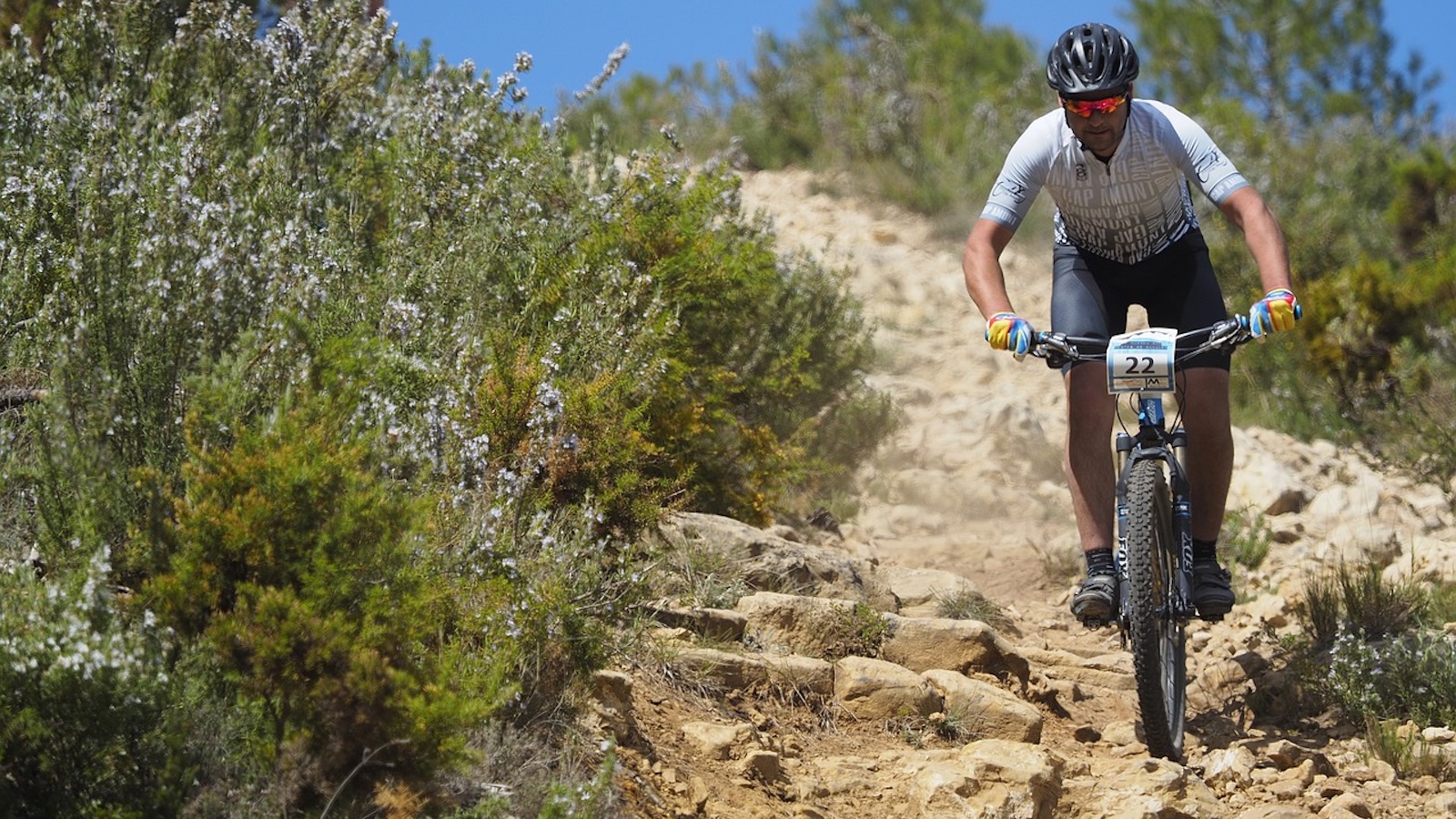
Hitting jumps and drops
Jumps and drops look super cool to ride but are also quite intimidating. It's important to take things steady and work your way up to bigger features as your skill and confidence progresses. Easier trails will feature alternate lines or jumps that can be easily rolled over. But more advanced trails could feature jumps and drops where air time is mandatory.
Confidence is a huge part of tackling jumps. Pump tracks are a good place to begin learning how to jump. You can pull up off a roller or small jump to begin understanding what it feels like to have both wheels off the ground.
Then you can move on to tabletop jumps. These jumps don't have a gap in the middle, so they are ideal for practicing. Tabletops are good for learning how much speed is needed for a given gap as well as controlling yourself and your bike in the air. Finally, once you are comfortable you can move onto double jumps and gaps.
Drops require a lot of the same skills. Start by rolling off a curb and landing with both wheels at the same time. Then you can move onto bigger drops and more natural terrain.
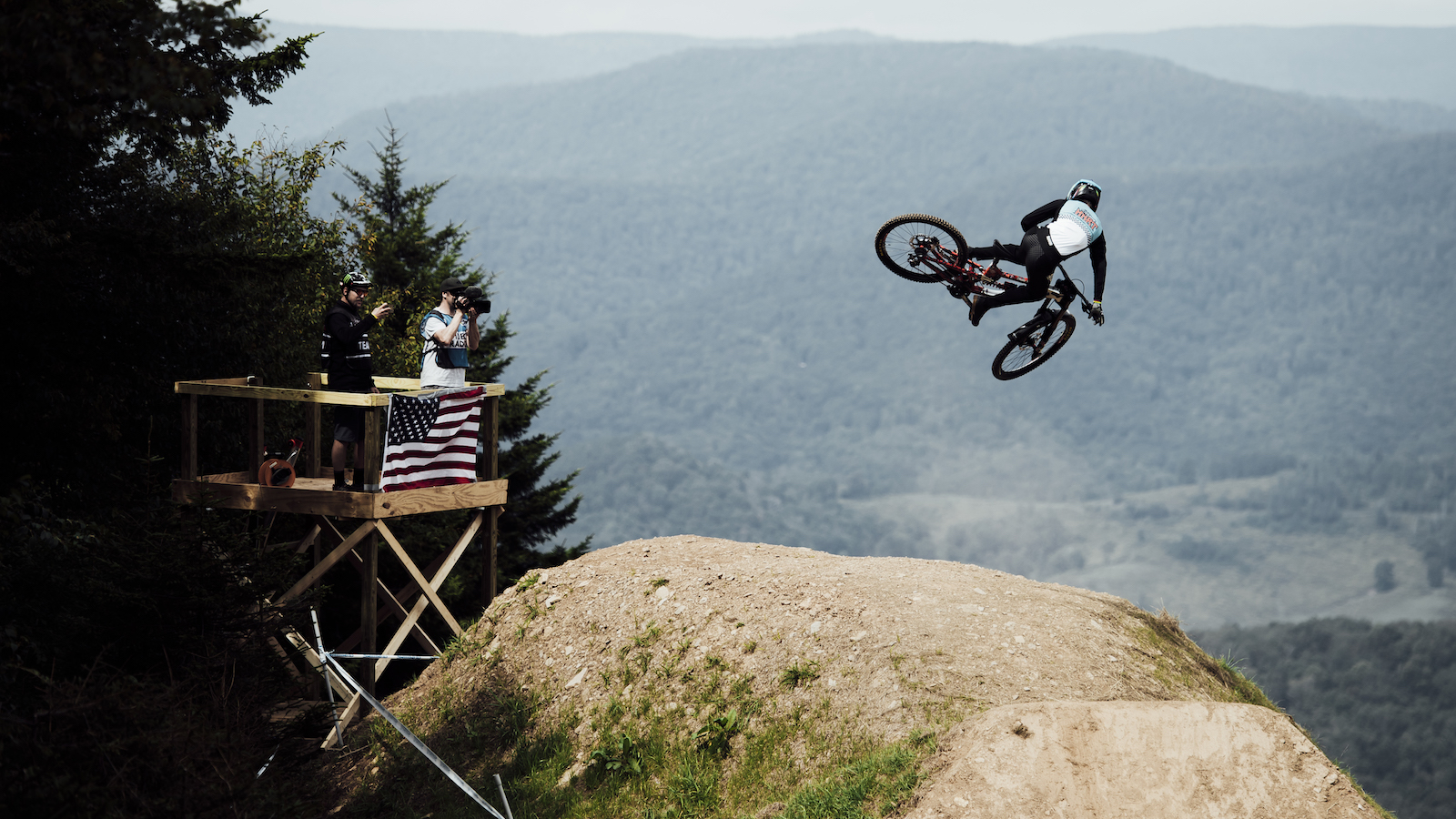
Corners, technical features, and jumps and drops are the majority of what you will find on singletrack trails. Once you practice it all and start to become confident in your abilities, the feeling of flying down a trail is unbeatable.
Remember to practice proper mountain biking etiquette. Lots of trails are multi-use, meaning that you'll encounter hikers and other trail users. If you're not at a specified mountain bike park or trail, there could be uphill riders and traffic too.
Once you've mastered your local trails, there are countless other singletrack trails around the world to explore, with an infinite combination of features. So keep on riding and exploring.
Ryan Simonovich has been riding and racing for nearly a decade. He got his start as a cross-country mountain bike racer in California, where he cultivated his love for riding all types of bikes. Ryan eventually gravitated toward enduro and downhill racing but has also been found in the occasional road and cyclo-cross events. Today, he regularly rides the trails of Durango, Colorado, and is aiming to make a career out of chronicling the sport of cycling.
Rides: Santa Cruz Hightower, Specialized Tarmac SL4
